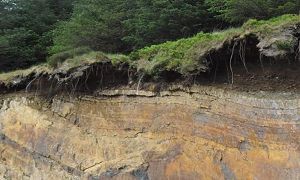CZ Science 2. Methods of Critical Zone Science
Grades 15 -
16
All Disciplines
Curriculum
Educational Objectives
By the end of this module students will be able to:
- Organize data from different data sources effectively, including online data sources.
- Interpret spatial and temporal trends from data records.
- Summarize systems modeling and geoscientific research approaches to design a sampling program.
- Infer trends from multiple strands of data to answer questions about Critical Zone services.
More on this module's objectives can be found here.
Audience
Higher Education
Observatory: National CZO
Author(s): Susan Gill (Stroud Water Research Center) and Ashlee Dere (University of Nebraska - Omaha)
Contact(s):
Funding: National Science Foundation–funded SERC InTeGrate project
Related Resource(s):
- CZ Science 0. Undergrad course (7 modules)
- CZ Science 1. Critical Zone background
- CZ Science 3. Critical Zone architecture & evolution
- CZ Science 4. Land-atmosphere exchange
- CZ Science 5. Water transfer through the Critical Zone
- CZ Science 6. Geochemistry & biogeochemistry
- CZ Science 7. Humans in the Critical Zone
Details for this Resource
This module presents basic scientific methods, such as literature searches and graphing (Unit 2.1) as well as Critical Zone specific methods, such as biogeochemistry, isotope geochemistry, geospatial investigation, and systems modeling (Unit 2.2), that will be used in later modules. The exercises presented in the two units are designed to introduce students to skills that they will build on in this course and in other geosciences courses.
Module Outline
-
Unit 2.1: Basic Tools and Analysis (Two 75 min class sessions)
- Students will complete an annotated bibliography organized around a research question then, based on the literature search, will refine that research question.
- Students will explore different means of data visualization and analysis to enhance the capacity to interpret different types of data.
-
Unit 2.2: Basic Critical Zone Concepts (Two 75 min class sessions, one of which is student presentations)
- Students will be introduced to systems modeling as a means to understand Critical Zone processes.
- Students will be introduced to geospatial techniques to situate sites and data in the Critical Zone.
- Students will explore biogeochemistry and isotope geochemistry techniques that are used in Critical Zone research.
Explore Further



